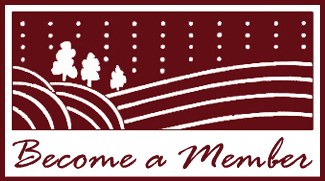.
.
Open! Wednesday – Sunday 10:00-5:00
Located in historic Hubbard Hall in Cambridge, NY, and amidst the rolling hills of Washington County in upstate New York, Valley Artisans Market is one of the oldest arts cooperatives in the country. Local fine artists and craftsmen work in a variety of hand-crafted media including glass, paper, cloth, photography, oil paintings, pastels, wood, mosaic, sculpture, metal, jewelry, ceramics and more. The Small Gallery features rotating shows by members and guest artists, and the market is always staffed by one of its artisan members.
Small Gallery
July 4, 2025 - July 28, 2025
Blooming Brushstrokes: A Symphony of Floral Art by Jill Evans
This exhibition celebrates local artist Jill Evans whose mastery of floral art transcends mere depiction. Each painting is a testament to Jill’s ability to infuse life into canvas, capturing the delicate nuances of nature’s blooms with vibrant strokes and ethereal hues. Jill’s unique style and profound connection to the natural world are evident in every brushstroke, making this show a must-see for art enthusiasts and nature lovers alike.
Artist reception will be held July 12th, 3 – 5 pm. The public is welcome!
Featured Artist
Timothy Achor-Hoch
 From the cocky eastern bluebird perched on a branch to the sun-drenched gold of the Canada warbler to the cedar waxwing calling from atop a cattail, Timothy Achor-Hoch’s paintings evoke the unique spirits of birds. The artist — based out of his Fish Crow Studio in his West Pawlet, Vermont, home — works from both his own photographs and field experiences.
From the cocky eastern bluebird perched on a branch to the sun-drenched gold of the Canada warbler to the cedar waxwing calling from atop a cattail, Timothy Achor-Hoch’s paintings evoke the unique spirits of birds. The artist — based out of his Fish Crow Studio in his West Pawlet, Vermont, home — works from both his own photographs and field experiences.
“I love painting birds because I see incredible beauty in their design,” he says. “What we see now is the result of millions of years of evolution. Their color and form are even more precious given the survival challenges they face.”
After pursuing art in high school, Achor-Hoch attended the Art Institute of Pittsburgh. He worked in an ad agency for a couple of years, then returned to school to study liberal arts at Juniata College in central Pennsylvania. There, a friend who was studying ornithology introduced him to birding, an activity that continues to drive his art. “We are at a crossroads with birds,” he explains. As much as he’d like to deny it, he says, “My culture is rapidly destroying their habitat, while simultaneously discovering ways to preserve it.” He aims “to raise awareness of a responsible way to interact with the natural world and at least do no harm. “
Achor-Hoch enjoys all the stages involved in painting birds, including being outside a lot with his camera. “I’m getting to know some nearby birding habitat in a way that I would never have imagined.” He also enjoys editing his photographs as he prepares them to inspire new compositions, using the imaging tools he learned from his earlier career as an art director.
The most challenging part of the process is the final rendering of his paintings on cradled birch panels. And the acrylics he uses pose their own problems, mostly because the paint dries much darker than it goes on. “Anticipating the color changes is an endless challenge,” he says.
While Achor-Hoch regularly manipulates a composition’s elements, his guiding principle is to evoke not just the bird, but also a piece of its environment as faithfully as possible. He is a studio artist rather than a plein-air painter, he explains, mostly because of his obsession with creating as accurate a representation as he can manage.
“I think my paintings come to life in the last stages, when the hue, value, and saturation of the color comes together with very specific detail of how light behaves on the subject and background,” he adds. “I like the idea of painting a specific bird, one that has shared a few brief moments with me. Sometimes the meeting is incredibly brief, and at other times, I have had a prolonged visit with an individual bird.”
Achor-Hoch also enjoys painting landscapes, most recently a pair of skyscapes. “In a way, it’s the same subject as the birds, in the same fields and woods,” he says.
In his spare time, Achor-Hoch enjoys playing the recorder, including Renaissance and Baroque music with a group of friends.
www.FishCrowStudio.com
Upcoming Shows
- Lynn Shanks – Places and Faces
August 1, 2025 - August 25, 2025
- Annual Overstock and Seconds Sale
August 9, 2025 - August 10, 2025
- ARRTA
August 29, 2025 - September 22, 2025
- Edward Hayes – Lauren Kenneally: Fairy Houses and Needle Felting
September 26, 2025 - October 20, 2025
- Donna Maria deCreeft – Paper and Found Objects
October 24, 2025 - November 17, 2025
- Members, Holiday Show
November 24, 2025 - December 24, 2025
- After Christmas Sale
December 26, 2025 - December 28, 2025
See past shows →
News
Small Works show winners!
Congratulations to the winners of the 3rd Annual Small Works Show! The winners are: Best in Show: Rachel "J'Lyn" Coppola for “Suspended Animation” Honorable Mention: Elyssa Macura for “Vivid Vision” People’s Choice: Ann Fitzgibbons for “Farm Land in Winter” Come see...
Instagram & VAM!
Valley Artisans Market is now on Instagram. Come follow us for a peek behind the scenes plus fun videos!




